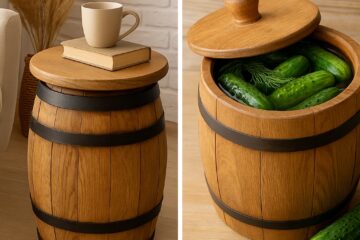Homebrewing is not just a hobby; it’s a delightful journey into the world of craft beverages. If you’ve ever wondered about creating your own beer or wine at home, you’re in for a treat. In this guide, we’ll walk you through the essentials of DIY homebrewing, making the process accessible and enjoyable for beginners.
The Basics: Equipment and Ingredients
Equipment
To embark on your homebrewing adventure, you’ll need some basic equipment. Gather essentials like a fermenter, airlock, siphon, sanitizer, bottles, and wood barrels. A homebrewing kit is an excellent starting point, ensuring you have the necessary tools to get brewing right away.
Ingredients
Understanding the key ingredients is crucial. Grains (such as malted barley), hops, yeast, and water form the foundation of most brews. Each ingredient contributes to the flavor, aroma, and overall character of your homemade beverage. Explore different types to discover your preferred combinations.
The Role of Wood Barrels: Enhancing Flavor and Aging
One intriguing aspect of homebrewing is the use of wood barrels, which can elevate your brew to new heights. Many brewers choose to age their concoctions in wooden barrels, imparting unique flavors and characteristics to the final product. Oak barrels, in particular, are popular for their ability to infuse subtle notes of vanilla, caramel, and even hints of spice into the brew.
Craft Beverages in Homemade Conditions
While beer and wine barrels are the traditional choices for homebrewing, craft enthusiasts are expanding their horizons. Mead, cider, and even homemade spirits are gaining popularity. Mead, made from honey, water, and yeast, offers a sweet and sometimes fruity alternative. Cider, fermented apple juice, provides a refreshing beverage with varying levels of sweetness. For those intrigued by distillation, experimenting with homemade spirits introduces a new realm of possibilities, allowing you to craft your own unique liquors and get even Moonshine from the barrel!
Step-by-Step Brewing Process
Sanitization: Before diving into the brewing process, ensure that all your equipment is thoroughly sanitized. This step is crucial to prevent contamination and ensure a clean fermentation.
Mashing: Mashing involves soaking the crushed grains in hot water to extract sugars. This step sets the stage for fermentation, where yeast converts sugars into alcohol.
Boiling and Hopping: Bring the sweet liquid (wort) to a boil, adding hops for bitterness, flavor, and aroma. The hopping stage allows you to experiment with different hop varieties and timings.
Cooling: After the boil, it’s essential to cool the wort rapidly. This helps achieve the desired clarity and prevents off-flavors.
Fermentation: Transfer the cooled wort to the fermenter and add yeast. Seal the fermenter with an airlock to allow gases to escape while preventing outside air from entering.
Bottling: Once fermentation is complete, it’s time to bottle your brew. Add a small amount of sugar to each bottle to create natural carbonation during the bottling process.
The Joy of Experimentation
One of the most exciting aspects of homebrewing is the ability to experiment. Try different hop combinations, yeast strains, and even additional ingredients like fruits or spices. The creative possibilities are endless, allowing you to tailor each batch to your unique taste preferences.
Tips for Brewing Success
Patience is Key – Brewing is a patient person’s game. Allow your brew to ferment and mature at its own pace for the best results.
Document Your Recipes – Keep a brewing journal to record recipes, ingredients, and the outcomes of each batch. This will help you refine your techniques and replicate successful brews.
Join the Homebrewing Community – Connect with fellow homebrewers online or at local clubs. Sharing experiences and learning from others can enhance your skills and knowledge.
The Key is a Joy
Embarking on the journey of DIY homebrewing is not just about the end product; it’s about the joy of creation. As you explore the art of brewing, you’ll discover a world of flavors and techniques that make each batch a unique expression of your craft. So, roll up your sleeves, gather your ingredients, and savor the satisfaction of crafting your own brew at home.




